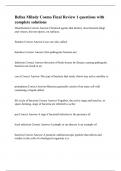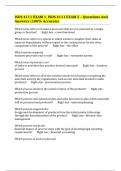Samenvatting
Summary Pre-Master Psychology Conflict, Risk & Safety Theory 1
- Instelling
- Universiteit Twente (UT)
Summary of the module Conflict, Risk and Safety, theory 1. This summary includes all the required readings (papers) of part 1 of the module, and the information from the lectures.
[Meer zien]













